Agricultural insurance
Being the outcome of technological and scientific progress, this evolution has taken place in the developed countries where farming has become a sophisticated industry. Enhanced for some decades by globalisation, this process is now starting to take shape in the emerging countries as well.
The risks of the agricultural sector
Traditional uncertainty-related risks
 © Cthoe, CC BY-SA 3.0 © Cthoe, CC BY-SA 3.0 |
A farming business is a naturally risky business. It is exposed to the numerous meteorological, climatic or epidemic hazards such as hail, drought, floods, tsunamis, storms as well as the emergence of new bugs and parasites.
These risks may affect the business in:
- its production operation as such
- its supply and anything related to its productive system (input prices)
- its outlets (products' price and quality)
- its revenues
- its continuity
Context-related risks
More than any other human activity, agriculture and the peasant world remain in general quite dependent on social and political events and decisions that impact directly the operational environment of the business. Wars, looting, fires and accidents have always had a devastating effect on the agricultural world. On the strictly economic level, the viability of the agricultural sector is directly linked to parameters such as tariff fluctuations, interest rates variations, market rules, legislations in terms of custom barriers and subsidies and fiscal systems.
Eventually, the economic cost-effectiveness of agricultural operations is faced with the technical and operational risks of the distribution circuits and management tools, the recourse to vaccines and the diversification of cultivations.
New risks
 The economic and social mutations triggered by globalisation as well as technological progress have led to the emergence of new risks related to:
The economic and social mutations triggered by globalisation as well as technological progress have led to the emergence of new risks related to:
- the environment (pollution suffered or caused by agriculture, pesticides)
- the use of new technologies: sewage sludge, genetically-modified agents, ...
- the emergence of new bugs: The Dioxin chicken Crisis, Avian Flu, Bovine Spongiform Encephalitis (BSE or Mad Cow Disease)
- uncertainty over the prices of farming products, which increases revenue variability
The insurance of the agricultural sector
 ©International Rice Research Institute, CC BY 2.0 ©International Rice Research Institute, CC BY 2.0 |
Because of the key role it plays in the countries' economy and due to its high exposure, agriculture is, in most countries, including the industrialized ones, a sector that is under the protection of the government that acts to protect its stakeholders and their means of production, especially during disasters related to the exceptional outbreak of a natural agent.
The public authorities' intervention is carried out either directly through the creation of solidarity and risk-share schemes, or indirectly as a reinsurer or by taking part in the funding of the premiums disbursed to the farmers.
The recourse to insurance companies is an add-on to the states' measure, and the cover of the agricultural sector is the business of public-private hybrid systems.
One of the key features of the insurance market's intervention is its failure to cover all of the guarantees.
This shortcoming is accounted for by the limited establishment of insurance systems, the chancy nature of risks and the entanglement of causes and events leading possibly to the accumulation of a nuisance or the advent of a loss.
Constraints to the efficency of agricultural insurance
Among the many obstacles that strain the scope of the insurability of agricultural risks, we note:
- the claims' extreme gravity: exceptional natural catastrophes (tsunamis, hurricanes, droughts, storms)
- the ineffective techniques of preventive measures used to counteract unpredictable and intensive natural phenomena
- the large specialisation of farms which impedes the prospects of risk diversification
- the gap between the perception of exposure and the incurred risks
Agricultural insurance guarantees and policies
An agricultural insurance policy may cover:
- personal dwellings and property,
- farming buildings,
- agricultural products: agricultural products are meant to include production factors and farming supplies such as compound food for livestock, fertilizers and pesticides, the products obtained from the farm like milk, eggs and the various products drawn from the earth, that is, genuine cultivations,
- livestock: the insurance policy specifies the “categories” of insured livestock (bovine, horses, pork, poultry, sheep, rabbits, deer, ostriches, ...). The policy also covers farm losses for large scale breeding,
- machines and equipment: machines and equipment comprise any piece of equipment, device, machine or tool used for farming purposes,
third party liability: a third party liability policy in general covers the user against any incurred responsibility pertaining to his personal acts, his buildings and his professional activities.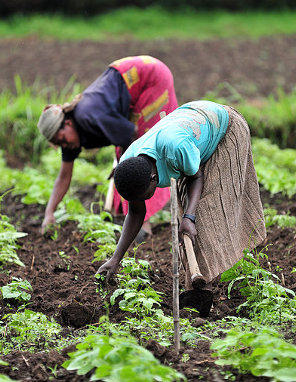 © Neil Palmer, CC BY-SA 2.0
© Neil Palmer, CC BY-SA 2.0
Insurance companies propose two underlying schemes (two levels of guarantee):
- The insurance policy of designated or specified risks: It is the most common type of insurance. The policy expressly mentions all risks against which the farmer gets insured: fire and allied perils, riots, vandalism, wind or hail storms, ...
Subject to certain exclusions and limitations in the description of risks, the insurer shall refund the physical loss or the damages caused by an insured event in accordance with the sums mentioned in the policy.
- The extended insurance policy or the comprehensive cover: All claims affecting directly the insured property are guaranteed except if the affected property or the risk have been expressly excluded from the insurance policy.
Deductible is applied to most items of agricultural insurance policies.
The cover may be extended to certain risks in return for the payment of an additional premium. For instance:
- Insurance against power outage in the holdings specialised in poultry and pork breeding,
- Insurance against poultry exhaustion due to excessive heat in poultry farms.
Agricultural insurance in industrialized countries
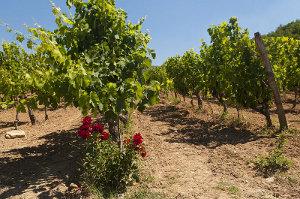 Vineyard of Vaucluse © Michal Osmenda, CC BY-SA 2.0 Vineyard of Vaucluse © Michal Osmenda, CC BY-SA 2.0 |
The management of farming insurance schemes differs from country to country, yet it always requires a public intervention that plays a key role in the process, which makes the scheme of an agricultural insurance one of the tools adopted in the farming policies in the European Union countries, in the United States or in Canada.
In France, the protection of farmers against risks rests on three systems:
- The insurance market basically covers property risks pertaining to damage for an agricultural farm, hail, frost, liabilities.
- The natural catastrophe cover: Instituted in 1982, the plan for the indemnification of natural disaster victims takes in charge the damages caused to buildings, stocks, equipment, vehicles, livestock, storms or any other floods.
- The National Guarantee Fund against Agricultural Calamities. The FNGCA was set up in 1964 and designed to develop preventive measures, indemnify producers and incite them to get insured against agricultural risks. It is funded by the State's budgetary subsidies and by a stable contribution on the premiums or subscriptions of other insurances.
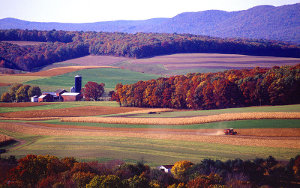 Pennsylvania Pennsylvania |
In the United States, set up by the federal government in 1939, the comprehensive crop insurance plan, the Federal Crop Insurance Corporation (FCIC), has undergone successive modifications.
The current scheme rests on the coordinated action of the federal state and the private companies to promote farmers' affiliation to insurance plans. The federal state intervenes in order to ensure the sector's continuity through the Risk Management Agency, entrusted with the programs management. The cost for the federal government amounted to 3612 million USD in 2004.
The market insurance stands as a key player in the coverage of agricultural activities. Insurance contracts are proposed to farmers by the private insurance companies, signatories of the “Standard Reinsurance Agreement”, the framework agreement that governs insurance programs. Since 1994, the financial markets have proposed for the major cultivations forward contracts on crops based on an aggregate performance per area.
The American agricultural insurance schemes are of two types:
- the «CAT» program (“Catastrophic Coverage”) which stands as a basic catastrophe insurance, with an average of 55% of the market price estimated for the considered agricultural production. The farmer is indemnified for losses higher than 50% of his production.
- the “Buy-up Coverage” program which includes numerous policies that may cover either the performances or the turnover.
22 types of different policies are currently proposed to cover 105 productions. Initially designed to offer cover to producers of large-scale cultivations, the scheme is today extended to include almost all of farming and animal productions.
Such insurance plans are now available in Canada and are starting to develop in Europe, for instance, in Great Britain where English cereal growers could underwrite an income insurance policy as of May 1999.
The agricultural world's insurance in emerging countries
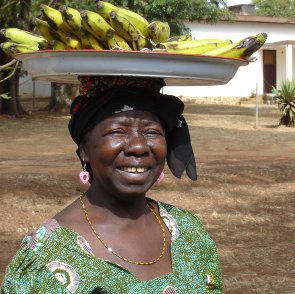 © Elin Beckmann , CC BY 2.0 © Elin Beckmann , CC BY 2.0 |
While in developed countries agriculture is less and less active in GDP and in job creation, the situation is radically the other way round in emerging countries with high rural population, that is, most of the countries in Asia, Africa and Latin America where peasant work still keeps a considerable percentage of the population busy.
Therefore, agriculture is a particularly sensitive sector for which political intervention is decisive in terms of protection.
The main features of the agricultural sector
- the parcelling of holdings
- the land status based on undivided family property
- the traditional management patterns and farming techniques
- the low income of populations and their difficulty in accessing credits
- the inadequate infrastructures: roads, electrification, irrigation systems
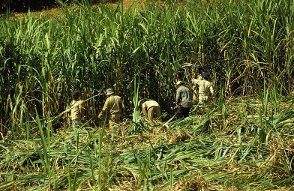 Sugar cane field, Mauritius © Hannes Grobe, CC BY-SA 2.5 Sugar cane field, Mauritius © Hannes Grobe, CC BY-SA 2.5 |
These characteristics do account for both the sector's high exposure and for the low penetration of insurance plans, either public or private. The major obstacles to an efficient agricultural world are the lack of financial resources, the inadequacy of the legal and regulatory systems, the difficulty in accessing information in terms of prevention and insurance markets.
Yet, in most of these regions, globalisation is pushing through. With the progressive dismantlement of customs duties and the modification of production, distribution and consumption patterns, we are witnessing a gradual mutation from traditional subsistence farming towards a commercial agriculture utilizing technological and scientific tools. The process will materialize especially in the production sectors of some strong value-added commodities (example: the sugar production in the Mauritius Island).
The role of the insurance sector in agriculture varies from country to country
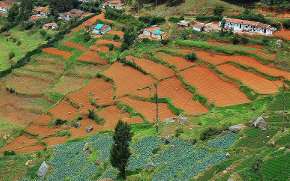 Nilgris, India © Rafeek Manchayil, CC BY 2.0 Nilgris, India © Rafeek Manchayil, CC BY 2.0 |
In China and India, namely, where the rural world constitutes a huge potential, the liberalisation of the insurance market and the emergence of new stakeholders are starting to produce a favourable trigger effect to the sector of agricultural insurance.
Clinging on a public/private partnership, numerous pilot programs are being implemented. They pertain to peasants' micro funding, micro insurance and to by-products based on climatic indexes.
On the African continent, most of the farming insurance systems implemented by the governments have been initiated and financed by the international institutions, like Ethiopia, which, in partnership with the World Food Program (WFP), launched in 2006 a pilot crop insurance program established over rainfall indexes.
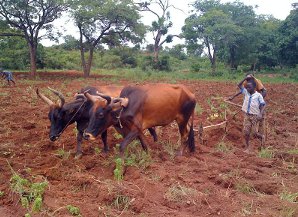 Ferkessédougou, Cote d'Ivoire ©Zenman, CC BY-SA 3.0 Ferkessédougou, Cote d'Ivoire ©Zenman, CC BY-SA 3.0 |
Only South Africa and Mauritius have stuck to an ancient insurance system, well-established and devolved upon the private sector. This specific feature is accounted for by the development of some agricultural productions and their integration in the international distribution circuits.
The current restructuring of the insurance sector in Nigeria is likely to pave the way for the emergence of new stakeholders and for the establishment of agricultural insurance schemes. This awareness is further stimulated by the critical food situation witnessed by several countries, hence, the decision of the Zambian government, for instance, to launch, in 2006, a policy of agricultural insurance.
The situation of the three central Maghreb countries in terms of agricultural insurance is pretty much the same.
In Morocco, its main player is the Mutuelle Centrale Marocaine d'Assurance, set up in 1969. Following several years of consecutive droughts, the government instituted in 1995, within the public/private partnership framework, a crop insurance scheme, particularly for cereals. The program designed and launched to secure 60 million quintals in cereals garanteed over 300 000 hectares
In Algeria, the 2006 market statistics have disclosed a very large deficit in terms of insurance cover for the agricultural sector which has reported a 22.8% decline in comparison with 2005 with just about 35 000 holdings covered by insurance out of a total of 1.2 million units, that is, a penetration rate of 3.5% while in Spain this rate amounted to 50% and in France to 20%.
According to the Compagnie Centrale de Réassurance, the national agricultural potential amounts to 8.5 million hectares while the number of farmers reached 4 million. The year 2006 claims have amounted to 400 million DZD (5.8 million USD) and the total premium amounts reached 525 million DZD (7.6 million USD).
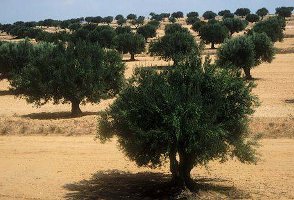 Olive trees, Sfax, Tunisia Olive trees, Sfax, Tunisia |
The same finding applies to Tunisia, where, in the framework of the insurance sector reform started in 2000, the specific measures designed to revitalise the agricultural business are about:
- the integration of insurance within the pattern of agricultural investment,
- the improvement of insurance services through the elaboration of standard contracts with comprehensive packages, the simplification of procedures and the reduction of adjustment and compensation deadlines, the disbursement of a 50% down payment for the benefit of the farmer in case of a dispute over the amount of damage appraised by the adjuster,
- the promotion of insurance for agricultural risks through the use of preferential tariffs.
New insurance tools for new stakes
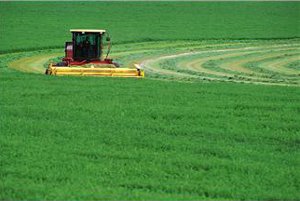 In industrialized countries, farmers are more and more exposed to the financial risks of performance and price induced by the fluctuation of international currencies.
In industrialized countries, farmers are more and more exposed to the financial risks of performance and price induced by the fluctuation of international currencies.
As demonstrated by the recent crises of BSE or the Avian Flu, the risks related to food safety and to public health amplify in a considerable way the exposure of stakeholders in the agro food sector.
Facing the evolving sector, the insurance business is innovating and framing adapted responses allowing the transfer of these new risks toward financial markets.
Regarded as an alternative to the government-run insurance programs, the financial by-products such as “the income insurance contracts” enable the farmer to define guaranteed revenue per cultivation, or the by-instruments based on climatic indexes. This reactivity allows the sector of farming insurance to play a more and more important role in risk management for the benefit of agricultural policies.
